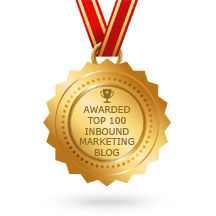
Our digital world has changed the marketing landscape forever. With new technologies, advanced software and ever-changing buyer behaviour, today’s marketers are becoming ever more reliant on IT to develop their marketing programs. It’s led to an unlikely yet inevitable union between Marketing and IT departments. According to Forbes contributor Lisa Arthur, CMOs are set to spend more in IT than CIOs do.
“Marketing is now a fundamental driver of IT purchasing, and that trend shows no signs of stopping, or even slowing down, any time soon,” she says.
“Clearly, it’s time for CMOs and CIOs to start forging true, strategic partnerships, so both marketing and IT can begin sharing ownership of both goals and outcomes.”
Traditionally, Marketing and IT haven’t been considered best buddies, but in this digital world they are about to get very cosy indeed. How can your business prepare?
1. Acknowledge that the convergence is happening
There’s no point denying it, Marketing and IT are aligning, and early adopters will be the ones to get ahead of the game.
Suncorp has already embraced the move. Executive General Manager Mark Reinke recently told an expert panel in Sydney that marketing and technology are becoming synonymous in his organisation.
“This is being driven by the need to personalise, to do this at speed – often less than a second – and to be able to do this [engagement] across hundreds of thousands of interactions,” he said. “You can’t do that without technology.”
“In my world, it’s the synthesis of three things: Customer insight, data, and the digitisation of experience to solve customer problems.”
In preparation for the shift Suncorp has already implemented a graduate program to build the creative technology skills it needs to better solve customer challenges.
2. Involve IT in the selection and evaluation of marketing applications
We’ve all heard the expression ‘working in silos’, the idea that too many departments work independently of each other without informing or involving each other in potentially related projects.
When it comes to the future of Marketing and IT, this idea will be potentially disastrous, especially considering Marketing’s reliance on technology and data for future campaigns.
HubSpot’s Jesse Mawhinney says that Marketing and IT should collaborate when selecting new applications and IT infrastructure to achieve the best possible outcome.
“When the marketing department evaluates a new technology, they likely focus on the application’s functionality, how it will improve the results of their marketing efforts, and how it will provide measurable ROI,” he says. “Members of the IT department are focused on an entirely different, but equally important set of criteria: data security, integration, reliability, and control.”
“As the marketing department continues to adopt new business applications, the IT department plays an ever-crucial role vetting new marketing technologies.”
3. Leverage IT expertise
Even the smallest of IT teams offer a wealth of technological experience that can be heaven-sent for a marketer. Evaluating marketing software destined for existing business systems can be a maze without the right advice, and this Mawhinney explains, is one of the biggest advantages of the alignment between Marketing and IT.
“Some cloud-based marketing applications can be deployed relatively quickly to get the basic off-the-shelf features running. For small businesses without a ton of IT requirements, this is perfectly acceptable,” he says. “Larger companies will often have more customization needs, which is why they should be prepared to work more closely with their IT department to implement new cloud-based platforms.”
“If you’re one of those folks who needs more customization options, you should consult with the IT department and understand how the application will be integrated with existing business systems to help establish a single view of a customer.”
4. Lay the groundwork with a clear strategy
As we know, Big Data is a principle driver of modern Marketing, and IT are the keepers of that data. But both departments will bring different philosophies about how that data should be compiled and used.
Maria Wasing from Econsultancy has already seen some IT and Marketing teams go head-to-head when it comes to implementing new technology and accessing the resulting data.
“They (IT) are struggling with implementing data-led technology in a way that works with all their other systems, fits with regulations around security and all within a reasonable cost,” she says. “Perhaps then it’s no surprise they want to sanity check some of the technology decision making being made by marketing.”
“It seems these difficulties are impacting on marketing professionals too, who told us that having access to the right data in real time is their highest priority. Despite the growing importance of data and its usage in customer experience, it seems that both marketing and IT people are struggling to make an effective strategy a reality.”
For Marketing and IT to successfully work together and integrate, a cohesive strategy and clear process that addresses their needs and concerns will be essential for every organisation.

